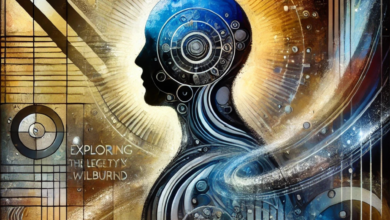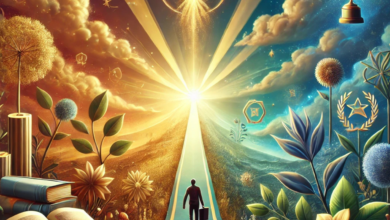Are Vampires Real? The Truth Behind the Myth

Are vampires real? This question has fascinated people for centuries. From ancient legends to Hollywood movies, vampires have been a part of our stories, but are they just myths, or is there some truth behind them? Many old tales about vampires come from real events, misunderstood diseases, and fear of the unknown.
Long ago, people didn’t have science to explain why the dead sometimes looked fresh in their graves or why diseases spread mysteriously. This led to beliefs in blood-drinking creatures that came back from the dead. Some medical conditions, like rabies and porphyria, even have symptoms that seem vampire-like. But does that mean vampires truly exist? Let’s dive deeper and uncover the facts!
Table of Contents
Are Vampires Real or Just a Myth? The Origins of the Legend
Long ago, people did not understand death and disease. When they saw strange things, they created stories to explain them. Many vampire legends started in Europe, where people believed the dead could return to harm the living.
Graves were sometimes opened, and bodies looked fresh with blood on their lips. People thought these were vampires, but science now tells us that bodies decompose in different ways. Gas builds up, making them look fuller, and blood can leak from the mouth. This was not magic—just nature.
Fear made people take extreme actions. Some placed stones in the mouths of the dead or staked their hearts to stop them from rising. These actions show how much people feared vampires and the unknown.

Why Did People Believe in Vampires? History’s Chilling Truth
Many vampire stories started because people did not understand sickness. In the past, diseases like tuberculosis made people pale and weak. Others had strange symptoms that looked like vampire traits.
Old villages often blamed mysterious deaths on vampires. If many people in a family got sick and died, others thought a vampire was draining their life. They did not know about germs and infection.
To stop vampires, people tried different things. They used garlic, buried bodies deep, or burned them. These traditions became part of the vampire legend we know today.
Diseases That Made People Think Vampires Were Real
Some diseases caused symptoms that made people look like vampires. These illnesses confused doctors and scared people in the past.
One example is anemia. This disease makes people look pale, weak, and tired—like a vampire who avoids the sun. Another is porphyria, which makes skin sensitive to sunlight, causing burns and blisters.
Another condition, catalepsy, makes people appear dead. Some people were buried alive because they were in a deep sleep. When they woke up, it seemed like they had risen from the dead!
Rabies and Vampires: The Scary Connection You Didn’t Know
Rabies is a deadly disease spread by animal bites. It causes strange behavior, fear of light, and aggression. These symptoms sound like vampire myths.
People with rabies sometimes bite others because of muscle spasms. They also react badly to water, just like how vampires hate holy water. This led to the idea that vampires fear water and can’t cross rivers.
In history, rabies outbreaks made people believe in vampires. If someone acted strangely after an animal bite, others thought they had turned into a vampire.
Porphyria: The Real “Vampire Disease” Explained
Porphyria is a rare illness that affects the blood. It makes skin very sensitive to sunlight, causing painful burns. This could explain why vampires in myths stay away from the sun.
Some people with porphyria also have red or dark teeth due to chemical changes in their bodies. This may have added to the idea that vampires have bloody mouths.
Doctors today know how to treat porphyria, but long ago, people didn’t understand it. They thought those with the disease were cursed or supernatural.
How Dead Bodies Can Look Like Vampires – The Science of Decomposition
After death, the body goes through many changes. Sometimes, these changes make it look like a person is still alive.
- Skin shrinks, making hair and nails look like they have grown.
- Blood can leak from the mouth, making it look like a person drank blood.
- Gas builds up in the body, causing movement in the grave.
These natural processes frightened people in the past. They thought the dead had returned as vampires.
Hollywood vs. History: How Vampires Changed Over Time
Movies and books have changed how we see vampires. Today, they are often shown as charming and powerful, but old legends tell a different story.
Before, vampires were seen as monsters. They were ugly, smelled bad, and acted like wild animals. Over time, writers and filmmakers made them handsome, rich, and mysterious.
Hollywood vampires are fun to watch, but they are not like the creatures from old stories. These changes keep the vampire myth alive in new ways.
Are There Real-Life Vampires Today? The Shocking Answer
Some people today call themselves vampires. They drink small amounts of blood or avoid sunlight, but they are not supernatural beings.
- Some believe drinking blood gives them energy.
- Others avoid the sun because they have skin conditions.
- Many join vampire communities as a lifestyle choice.
While modern “vampires” exist, they are just people who follow different lifestyles, not undead creatures.

Conclusion
Vampires are a mix of history, myths, and misunderstandings. Long ago, people created these stories to explain things they feared, like disease and death. Science now helps us understand what really happened.
Though real vampires don’t exist, the legend remains popular. Books, movies, and TV keep these stories alive. Vampires may not be real, but their place in culture is here to stay.
FAQs
Q: Are vampires real?
A: No, vampires as seen in movies and legends are not real. They are myths based on old fears and misunderstandings.
Q: What diseases made people think vampires were real?
A: Diseases like rabies, porphyria, and anemia caused symptoms that made people look like vampires.
Q: Why do vampires avoid sunlight in stories?
A: Some diseases, like porphyria, make people very sensitive to sunlight, which may have inspired this part of the legend.




